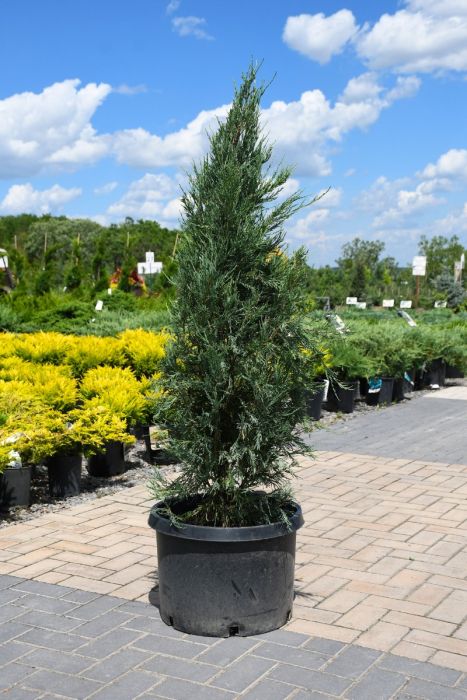Juniperus, Rocky Mountain Juniper 'Blue Arrow'



- Sun Preference
- Full-Sun
Description
This improved variety produces bright blue foliage on a narrow, upright form. Ideal for screening. Rapid growth rate.
Minnesota's Largest Selection of Shrubs
Elevate your landscaping with Gertens' unmatched variety of shrubs! Selecting the right shrubs for your backyard can enhance its beauty and functionality. Consider factors like sunlight, soil type, and mature size when choosing shrubs. For sunny areas, flowering shrubs like roses or hydrangeas can add color and charm. In shady spots, opt for shrubs like azaleas or hostas. Evergreen shrubs provide year-round interest and privacy, while deciduous shrubs offer seasonal color changes. At Gertens, we offer a wide selection of shrubs to suit every backyard need.
Details
Blue Arrow Juniper | Juniperus scopulorum 'Blue Arrow'
Height: 15 feet
Spread: 4 feet
Sunlight: full sun
Hardiness Zone: 4a
Other Names: Colorado Red Cedar
Brand: Gertens
Description:
An extremely narrow and upright small evergreen tree, with showy powdery-blue foliage and blue berries; adaptable to dry soils, but needs full sun; excellent for color, articulation or screening, makes a curious, almost formal tall evergreen hedge
Ornamental Features
Blue Arrow Juniper is a dwarf conifer which is primarily valued in the landscape for its rigidly columnar form. It has attractive blue evergreen foliage. The scale-like sprays of foliage are highly ornamental and remain blue throughout the winter. It produces silvery blue berries from late spring to late winter.
Landscape Attributes
Blue Arrow Juniper is a dense multi-stemmed evergreen shrub with a narrowly upright and columnar growth habit. It lends an extremely fine and delicate texture to the landscape composition which can make it a great accent feature on this basis alone.
This is a high maintenance shrub that will require regular care and upkeep, and is best pruned in late winter once the threat of extreme cold has passed. Deer don't particularly care for this plant and will usually leave it alone in favor of tastier treats. It has no significant negative characteristics.
Blue Arrow Juniper is recommended for the following landscape applications;
- Accent
- Vertical Accent
- Hedges/Screening
- General Garden Use
- Planting & Growing
Blue Arrow Juniper will grow to be about 15 feet tall at maturity, with a spread of 4 feet. It has a low canopy, and is suitable for planting under power lines. It grows at a medium rate, and under ideal conditions can be expected to live for 70 years or more.
This shrub should only be grown in full sunlight. It is very adaptable to both dry and moist growing conditions, but will not tolerate any standing water. It is not particular as to soil type or pH. It is highly tolerant of urban pollution and will even thrive in inner city environments. This is a selection of a native North American species.
More Information
| Gerten Grown Plants | Gerten Grown Plants |
|---|---|
| Sun Preference | Full-Sun |
| Mature Height (Range) | 10 - 15 feet |
| USDA Hardiness Zone | 4, 5, 6, 7, 8 |
| Common Family Name | Juniper |


